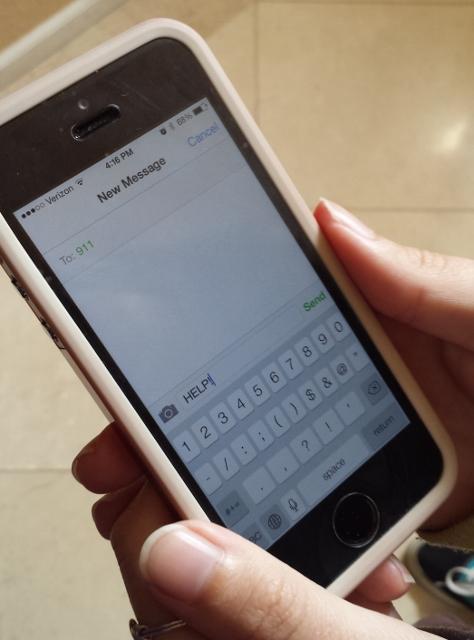As of May 15, 2014, America’s four major cellphone carriers have launched the service of text communication to 911 instead of placing a call.
AT&T, Sprint, T-Mobile and Verizon are testing out the new service in rural communities where emergency call centers are equipped to receive text messaging. All four carriers have voluntarily committed to working on making the transition to a universal text-to-911 system in the U.S.
“It’s awesome that they’re starting to make that available, because it’s a really useful option,” said sophomore Leisha Moroney. “What if you’re hiding from an attacker? You can’t exactly call 911 or you’ll give yourself away. The only problem I could see would be the call center not being able to get enough information from just a text message.”
Counties in sixteen states now have the text-to-911 option available. but coverage is still very limited. Technology in call centers is being adapted and upgraded in order to be able to receive and respond.
Users must type 911 into the number field and the location and emergency in the text body. The dispatchers, however, cannot receive photos or video.
The Federal Communications Commission has implemented a “bounce-back” automatic SMS message when a cellphone user tries to text 911 in an area that is not yet supported by the program.
The addition of the ability to be able to text message a dangerous situation to 911 is intended to help those with hearing or speech disabilities as well as provide a safer option to people in situations where having to speak on the phone could place their lives in danger.
“I don’t think it will make much of a difference,” said sophomore Mark Palladino. “In an emergency, calling 911 would be much faster and more effective than sending a text.”
Services making text messaging to emergency response available have also been launched in other countries.
On March 18, 2014, Canada also implemented a Text with 9-1-1 service, developed by the CRTC Interconnection Steering Committee Emergency Services Working Group. However, this service is currently available only for the deaf, deafened, hard of hearing or speech impaired community.
Users must have their cellphones registered with their carriers in order for their texts to go through to call centers. While only the DHHSI community has this option, Text with 9-1-1 is expected to be available for the general public in the future.
In the UK, SMS messaging for emergency response has been a mandatory service since 2011. Their service was also originally only available for the hearing impaired with registered devices. Ofcom, the independent regulator for UK communications industries, decided that the number of registered users called for operators to be obliged to support the service.
Sophomore Gabriele Cocco said, “Calling is faster, and texting can be too ambiguous sometimes, especially for an important emergency situation. Just calling is still better, but there are definitely situations when being able to send a text to 911 would be useful.”
The FCC advises “not rely on text to reach 911″ and reminds on its informational page that “in most cases, you cannot reach 911 by sending a text message” at this point in time. Future plans include spreading this feature to be accessible all across the country.
The international support of text messaging to emergency response reflects the changing methods of communication in modern times.


